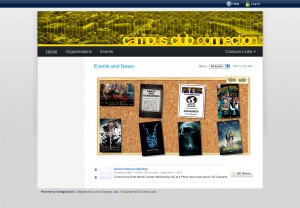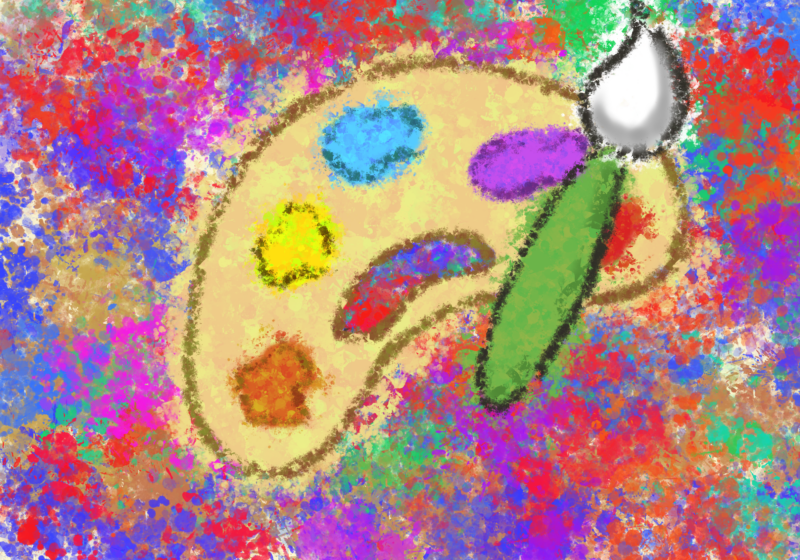
Courtesy of ccc.rochester.edu
The Campus Club Connection (CCC) — UR’s centralized database for everything extracurricular — underwent an extensive overhaul this summer.
Now boasting a new home page aggregating an array of campus events, the site also hosts pages of all 251 of UR’s student organizations which can now be extensively customized to include social media links, club-specific rosters and pictures.
A third party company called Campus Labs, which builds similar systems for a large number of colleges nationwide, created the new site, discussions for which began at the end of the 2011-12 school year.
“We wanted to add a lot of functionality to the system and it would have taken a lot of development internally to do it, so we decided to use a system that already existed,” Students’ Association Technology and Web Coordinator Colin Knapp said. “Now the groups have tremendous flexibility over their public pages with lots of opportunities for social media linking.”
Knapp, who helped to implement the interface provided by Campus Labs into UR’s system, including transferring club information to the new system, will be the primary administrator of the new CCC. Campus Labs coded the entire site; UR cannot change any of the code, which Knapp sees as a benefit because it will be “forever maintained” by Campus Labs. UR can also request new features and the colleges that Campus Labs serves can then vote on improvements that would be effective for all colleges.
The list of changes that students wanted to be implemented on the old CCC was “enormous,” according to Knapp. These included new functionality, a more “modern feeling” site that was easier to use, a site more integrated with campus procedures and policies and many more.
So far, Knapp says the feedback he has gotten indicates that most organizations find the site easy to use. “It’s very native,” he said.
Knapp said that the “biggest and best” feature of the new CCC is event registration, which will now happen exclusively online in lieu of the previous and often cumbersome paper process.
“It really allowed us to digitize and modernize a lot of the process,” Knapp said.
Organizations can now post events that display in poster form on a virtual bulletin board on the home page if groups submit a flier image and also in a scrolling list at the bottom of the home page where users can enlarge them for more details.
There are four ways that a group can customize their page — font face for text, text color, link color and a header image.
Organizations can now more easily message all members from one place via email or text, a feature that Knapp believes will be popular, in addition to the fact that organizations can now create custom position titles and add as many members to executive positions as they like — which was impossible on the old CCC.
“The old CCC wasn’t used a lot for group communication and people fell back to email to keep in touch,” Knapp said.
Another feature of the new site that Knapp touts is the fact that students can customize their individual profile on the site, which enables the CCC to make individualized suggestions about organizations in line with a student’s interests.
More changes to the CCC are also on the horizon. Next semester student organizations will be able to reserve rooms online as well as work on the financial aspect of their clubs with sending and requesting money. Eventually groups may also be able to hold internal elections online, Knapp said.
The old CCC will be available to organizations for the remainder of this semester so that groups can transfer information to the new site.
Student organizations tend to view the CCC in a generally positive light.
President of the Student Association for the Development of Arab Cultural Awareness (SADACA) and senior Ruth Lindemann said she was initially confused as to why the new site lacked a “Cultural” category to enable students to more easily find SADACA and similar groups, a category that existed on the old CCC. This category has subsequently been added, but Lindemann said she is still unsure as to why SADACA is not available under the “Awareness” category.
“Having the search bar does help, but if you are just browsing through the categories, SADACA would never be found and that could affect us acquiring new members,” Lindemann explained.
Knapp said that re-categorizing an organization is something that has to be requested through Campus Labs and that he cannot change.
Lindemann also said that she would like to have access to her group’s budget information, a feature that will be added with other new features this spring.
“In general, I think they have put forth a lot of good ideas and the new site has some potential, but they just need to execute it better,” she said.
Vice President of Tiernan Project Russell Tobias said that his group liked the feature where potential new members must be approved — a feature that other groups have complained about.
“The improved roster feature allows for easier navigation through the members list and gives members more control, with the ability to accept or decline invitations to groups or events,” he said.
President of College Democrats and senior Andrew Cutillo said he found it “simple” to customize his organization’s page, describing the process “as simple as uploading what we wanted where we wanted it.”
“Overall we’re very pleased,” Cutillo said of the new features. “Managing our membership is a little easier, which helps with our large numbers, and the site allows us to organize our page much more effectively.”
He added that despite what he sees as the “inability to browse all groups easily,” the new site will be helpful with the upcoming elections because there will be so many opportunities for members to get involved.
“It’s a great way for us to post the information and let students explore it as they will, rather than email them details on every campaign rally or speaker coming to campus,” he said.
The only caveat in this, he says, is that emails cannot be customized with different font sizes or colors, which he thinks will dampen some of the election season enthusiasm.
SA Communications & Public Relations Co-Chair and sophomore Rishi Sharma said he is “pretty content” with the new CCC and described two main ways that the SA will take advantage of the new site — the group registration process managed by the Policy & Review Committee that was previously on the SA site will now be on the CCC and this spring groups will be able to manage funds through the CCC site, a process which the SA Appropriations committee is responsible for.
“We feel pretty confident in how [the CCC] can be integrated in our processes,” Sharma said.
Sharma added that he hasn’t heard much negative feedback from students, in part because he believes many are still in the adjustment phase where the site’s features are new and that he thinks they seem to be enjoying what it has to offer.
“It’s a good product and will definitely makes things easier and help us stay organized,” he said.
For questions about using the CCC, students can email colin.knapp@rochester.edu or download a comprehensive PDF guide explaining the site’s new features at ccc.rochester.edu.
Buletti is a member of the class of 2013.





